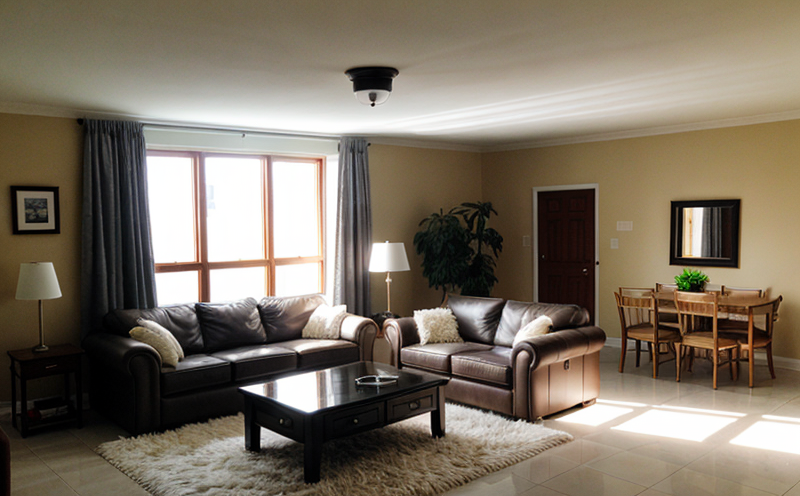ASTM E1477 Light Reflectance Testing of Indoor Surfaces
The ASTM E1477 standard specifies the procedure for determining the light reflectance value (LRV) of indoor surfaces. This test is essential in ensuring that building materials, finishes, and furnishings meet lighting performance criteria set by architects, designers, and regulatory bodies.
The light reflectance value is a measure of how much visible light a surface reflects back into an environment. It plays a crucial role in interior design, energy efficiency, and occupant comfort. By testing surfaces for their LRV using ASTM E1477, stakeholders can ensure that the materials chosen will contribute positively to the overall lighting conditions within a space.
ASTM E1477 is applicable not only to paints, coatings, and finishes but also to textiles, carpets, and other interior elements. The test can be performed on large panels or small samples, depending on the material type and intended use. This flexibility allows laboratories to accommodate various client needs while maintaining strict adherence to standard procedures.
The testing process involves several critical steps:
- Preparing the specimen according to ASTM E1477 requirements;
- Sampling the surface under controlled conditions (ASTM E1477 specifies a standardized viewing angle of 60 degrees);
- Measuring the reflected light using an integrating sphere photometer or similar instrumentation.
The results from ASTM E1477 are used to assess compliance with various standards and guidelines, including ES, LEED, and ASHRAE. These ratings influence the perceived quality of a space and can impact marketing strategies and customer satisfaction.
Understanding light reflectance is vital for creating balanced indoor lighting environments that enhance visual comfort and reduce eye strain. Poorly chosen finishes or materials can lead to glare, excessive heat gain, or insufficient illumination—issues that ASTM E1477 helps mitigate by providing accurate data on surface properties.
In summary, ASTM E1477 is a fundamental tool for quality assurance in the context of indoor lighting design and construction. It ensures that surfaces reflect light efficiently, contributing to healthier, more energy-efficient spaces. By leveraging this standard, professionals involved in architecture, engineering, and interior design can make informed decisions about materials selection.
Benefits
Implementing ASTM E1477 brings numerous benefits across various sectors:
- Energy Efficiency: Higher LRV values contribute to lower energy consumption by reducing the need for artificial lighting during daylight hours.
- Visual Comfort: Properly reflecting light can minimize glare and ensure even illumination, enhancing occupant well-being.
- Regulatory Compliance: Meeting standards like ASTM E1477 ensures adherence to local codes and regulations, avoiding potential fines or delays in project completion.
- Innovation: Continuous testing allows for the development of new materials that meet evolving market demands and sustainability goals.
By embracing ASTM E1477, organizations can optimize their projects while maintaining a commitment to sustainability and quality.
Quality and Reliability Assurance
Ensuring the highest levels of quality and reliability is at the core of our testing services. Our team adheres meticulously to ASTM E1477, employing state-of-the-art equipment and experienced personnel to deliver accurate results every time.
We start by carefully preparing specimens according to specified dimensions outlined in the standard. This preparation ensures that each sample represents the actual material as it would be used in real-world applications. Next, we conduct measurements under controlled conditions using high-precision instruments like integrating sphere photometers. These tools provide precise readings of light reflectance values.
Data generated through ASTM E1477 are rigorously reviewed and validated to ensure accuracy. Our reports include detailed descriptions of the testing process, raw data, calculated LRVs, and interpretations relevant to the project at hand. Compliance with ASTM E1477 is crucial for meeting various certification requirements such as Energy Star, LEED, ASHRAE, and others.
Our commitment extends beyond simply providing test results; we also offer expert advice based on our findings. This support helps clients make informed decisions about material selection, ensuring they align with their goals regarding energy efficiency, visual comfort, and sustainability.





